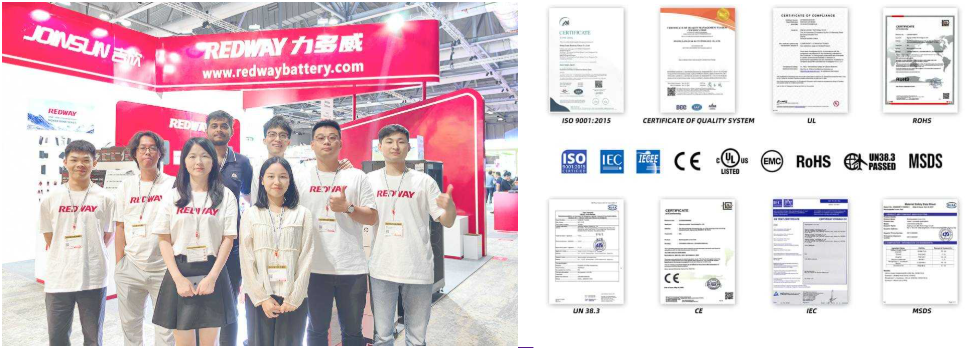Upgrading to lithium batteries in your RV can significantly enhance your power system’s efficiency and reliability. This guide provides a comprehensive, step-by-step installation process to help you transition smoothly from traditional lead-acid batteries to advanced lithium technology.
To install lithium batteries in your RV:
- Gather tools like wrenches and a multimeter,
- Turn off the electrical system,
- Remove old batteries by disconnecting cables (negative first),
- Clean out the battery compartment,
- Install new lithium batteries securely,
- Reconnect cables (positive first),
- Test voltage levels with a multimeter before powering on!
1. Gather the Necessary Tools and Materials
Before starting the installation, ensure you have the following tools and materials:
Wholesale lithium golf cart batteries with 10-year life? Check here.
- Lithium LiFePO4 batteries
- Battery management system (BMS) (if not integrated)
- Appropriate charger for lithium batteries
- Heavy-duty cables (specific gauge based on current requirements)
- Battery terminal connectors
- Fuses and circuit breakers
- Volt/amp meter for testing
- Tools: wrenches, screwdrivers, wire strippers, and crimping tool
- Safety gear: gloves and safety glasses
2. Safety First
- Disconnect Power: Before starting, disconnect any power sources to the RV, including the main battery disconnect switch.
- Wear Safety Gear: Always wear gloves and safety glasses to protect yourself from potential battery acid and electrical hazards.
3. Remove the Old Batteries
- Access Battery Compartment: Open the compartment where the existing batteries are housed. This may require removing panels or covers.
- Disconnect Cables: Carefully disconnect the negative (-) cable first, followed by the positive (+) cable to avoid short circuits.
- Remove Batteries: Take out the old lead-acid batteries, noting their positioning for reference.
4. Prepare for Lithium Installation
- Clean the Compartment: Ensure the battery compartment is clean and free from corrosion or debris.
- Check Wiring: Inspect the existing wiring for any signs of damage. Replace any frayed or corroded cables to ensure optimal performance.
5. Install Lithium Batteries
- Position the Batteries: Place the new lithium batteries in the battery compartment. Ensure they are secure and positioned correctly, typically with the terminals facing outward for easy access.
- Connect the BMS: If your lithium battery does not come with a built-in BMS, connect an external BMS according to the manufacturer’s instructions.
6. Connect the Cables
- Positive Cable Connection: Start by connecting the positive (+) cable to the positive terminal of the first lithium battery. Use appropriate connectors and ensure a tight fit.
- Negative Cable Connection: Connect the negative (-) cable to the negative terminal of the battery. Ensure all connections are secure and corrosion-free.
7. Implement Safety Features
- Fusing: Install fuses and circuit breakers as recommended by the manufacturer. This step is crucial for protecting the system from overloads and potential fires.
- Wire Routing: Ensure that all wiring is routed properly and secured to prevent movement or contact with other components.
8. Connect to the Charger and Inverter
- Charger Setup: Connect the charger specifically designed for lithium batteries. Ensure it is compatible with your battery’s voltage and specifications.
- Inverter Connection: If you are using an inverter, ensure it is compatible with lithium technology. Connect the inverter to the battery system, following the manufacturer’s guidelines.
9. Test the System
- Power On: Once all connections are made, turn on the main battery disconnect switch and check for any error codes or warnings.
- Voltage Testing: Use a volt/amp meter to ensure the system is functioning correctly. Confirm that the voltage matches the expected level for your lithium batteries.
10. Monitor Performance
- Battery Monitor Installation: If your lithium batteries do not include a built-in monitoring system, consider installing a separate battery monitor. This device provides real-time information about the battery’s state of charge (SOC) and health.
- Routine Checks: Regularly check the battery’s performance, charging cycles, and overall health to ensure optimal operation.
Conclusion
Installing lithium batteries in your RV can provide enhanced performance and longevity compared to traditional lead-acid systems. By following this step-by-step guide, you can ensure a safe and effective installation. Remember to consult the battery manufacturer’s instructions and seek professional assistance if needed. Enjoy the benefits of a reliable power source for your RV adventures!
Latest News
Want OEM lithium forklift batteries at wholesale prices? Check here.
- Recent articles provide comprehensive guides on safely installing lithium batteries in RVs, emphasizing safety protocols.
- Innovations in battery management systems are making installations easier and more efficient.
- RV enthusiasts are increasingly opting for lithium solutions due to their lightweight and long-lasting performance.
Redway Expert Comment
Installing lithium batteries in RVs can significantly enhance your travel experience. Following a step-by-step guide ensures safety and efficiency during installation. It’s essential to consider factors like battery management systems and proper wiring to optimize performance. As more RV owners transition to lithium technology, understanding the installation process becomes crucial for maximizing benefits.”





